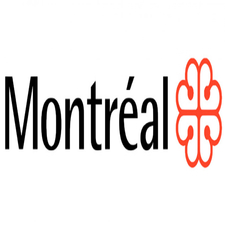SUM
Type of resources
Topics
Keywords
Contact for the resource
Provided by
Formats
Representation types
Update frequencies
status
-

Name bank dedicated to female representation to discover hundreds of women who have marked our history. Read the [process] (https://montreal.ca/toponymie/toponym-elles) that led to the name bank.**This third party metadata element was translated using an automated translation tool (Amazon Translate).**
-

List of toponyms used in the City, which includes the origin of more than 6,000 names of streets and public places in the 19 boroughs of Montreal. See website [montreal.ca] (https://montreal.ca/toponymie/) for a search tool.**This third party metadata element was translated using an automated translation tool (Amazon Translate).**
-

Individual trips as recorded by the City of Montreal's Mon RésoVélo application. This mobile application was developed to collect information on bicycle trips within the Montreal metropolitan area. App users installed the app on their phones and needed to activate the app to record a trip. The data provided here are the individual trips recorded by the application and processed to preserve the privacy of users. Due to the collection method (voluntary collection without user selection), it is not possible to guarantee that this data is fully representative of bicycle use (e.g. representation bias in users of the application, etc.) Other limitations to these data are listed in the methodology section.**This third party metadata element was translated using an automated translation tool (Amazon Translate).**
-

Geolocation of bicycle arches on the territory of the City of Montreal**This third party metadata element was translated using an automated translation tool (Amazon Translate).**
-

Representation of the administrative arterial network of the City of Montreal from the geobase, as defined by the regulation identifying arterial and local road networks (02-003). The City's arterial network is under the responsibility of the city council. All other streets or roads that belong to the City of Montreal and that do not form the City's arterial network are the responsibility of the borough councils in which they are located.**This third party metadata element was translated using an automated translation tool (Amazon Translate).**
-

Number of trips calculated on a daily basis**This third party metadata element was translated using an automated translation tool (Amazon Translate).**
-

Taxi waiting stations available to customers in order to ensure a fast and efficient service. ## #Avis important about updating data The data on this page has not been updated as of October 15, 2025. To access more recent data from the Montreal Sustainable Mobility Agency, please consult the following link: https://donnees.montreal.ca/fr/dataset/postes-d-attente-de-taxi Please note that this page will be decommissioned on November 14, 2025 and will no longer be accessible.**This third party metadata element was translated using an automated translation tool (Amazon Translate).**
-

This data set presents the basemap developed as part of the Montreal by Foot (MàP) project in a web tiled map service (_Web Tile Map Service_ WTMS). It is made available in order to allow citizens and partners of the City to create web mapping tools by offering a unique graphic charter, designed specifically to promote pedestrian travel. The Montréal à Pied project aims to improve orientation and pedestrian paths throughout Montreal. The selection and classification of places of interest prioritize pedestrian and local travel. This project includes a cartographic component intended to renew the graphic signature of the representation of the City of Montreal, on digital media and on urban furniture receiving maps of the City. The basemap is intended in particular to support the representation of data [Places of interest] (places of interest) also developed under the MàP project and available as open data.**This third party metadata element was translated using an automated translation tool (Amazon Translate).**
-

Representation of the height limits of buildings as prescribed by the urban plan for the entire borough of Ville-Marie and part of the districts of Sud-Ouest and Verdun. Each district is responsible for enforcing these boundaries by the company in its zoning by-law and may be more restrictive than the values set out in this data set. Please consult the [section dedicated to urban planning] (https://montreal.ca/articles/plan-durbanisme-18111) and the [interactive maps in land use planning] (https://montreal.ca/services/cartes-interactives-amenagement-du-territoire) on the City of Montreal's website for more information. The [zoning section] (https://montreal.ca/sujets/zonage) can be consulted for borough-specific information.**This third party metadata element was translated using an automated translation tool (Amazon Translate).**
-

Data set geolocating road signs on Montreal territory. It should be noted that [road signs concerning parking] (/city-of-montreal/parking-on-street-signalisation-currant) are available in a separate set. Additional files provide more details on the descriptions and the codifications of the panels. The images of all the panels are also available.**This third party metadata element was translated using an automated translation tool (Amazon Translate).**
 Arctic SDI catalogue
Arctic SDI catalogue